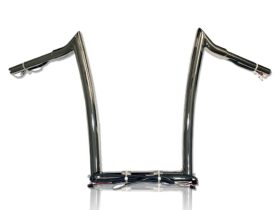It is becoming increasingly more common for new cars to sport a variety of composite parts. From composite wheels to carbon fiber spoilers, parts made of composite materials are transforming modern cars from hunks of metal to vehicles combining a range of materials with different desirable properties.
How much do you know about the composites used in the automotive industry? How much do you know about composites in general? The goal of this post is to give you an introductory education to what composites are and why carmakers are using them. This is good information to know given the fact that automotive designers and engineers are constantly looking for new ways to put composites to use.
What is a composite?
A composite is nothing more than a product manufactured by combining two or more materials with individual properties the manufacturer desires. Reinforced concrete is a good example. It is made by pouring concrete around reinforcing bar (rebar) or steel cables.
The composites used by the automotive industry are generally made with a combination of fibers and polymer resins. A good example here is carbon fiber. A carbon fiber car part starts as a piece of fabric woven from carbon fiber thread. The fabric is combined with epoxy resin in a mold. Then the mold is subjected to high heat in an autoclave. This process, known as curing, transforms the two individual materials into a composite that is stronger than steel and aluminum.
Composites for automotive use do not have to be carbon fiber. Some of the composite materials carmakers use are based in fiberglass. Others involve Kevlar. The only reason we hear so much about carbon fiber is because it is the composite choice these days.
Why do carmakers use it?
Now that you know what a composite is, you are probably wondering why carmakers use composite materials – specifically carbon fiber. There are a number of different reasons, according to Salt Lake City’s Rock West Composites.
For starters, carbon fiber offers superior strength and durability over both steel and aluminum. But that’s not all. Carbon fiber is lighter than steel and aluminum as well. Carbon fiber essentially offers a better strength-to-weight ratio that allows designers to improve a number of things during the design phase of a new car.
Think of fuel efficiency. A lighter car will obviously burn less fuel. But there is no point in making a car lighter if it cannot withstand the same punishment as steel and aluminum. Carbon fiber fits the bill. It offers the strength that carmakers need at a lower weight cost, thus enabling greater fuel efficiency without sacrificing safety.
If that’s not enough, carbon fiber is not subject to the same environmental conditions that adversely affect metals. Carbon fiber does not corrode. It is not bothered by road salt. It is more resistant to temperature extremes thanks to greater dimensional stability.
Why don’t we see more of it?
Given all of the benefits of carbon fiber as a material for building cars, it is somewhat surprising that we do not see more of it. According to Rock West, it is all about pricing. Given the cost of carbon fiber as compared to steel and aluminum, auto manufacturers have to be careful about how much carbon fiber they use. Incorporating too much would make a car too expensive to sell.
The good news is that advancements in manufacturing technology and recycling are gradually bringing down the cost of most composite materials. It is only a matter of time before that pays off in greater carbon fiber usage among carmakers.









